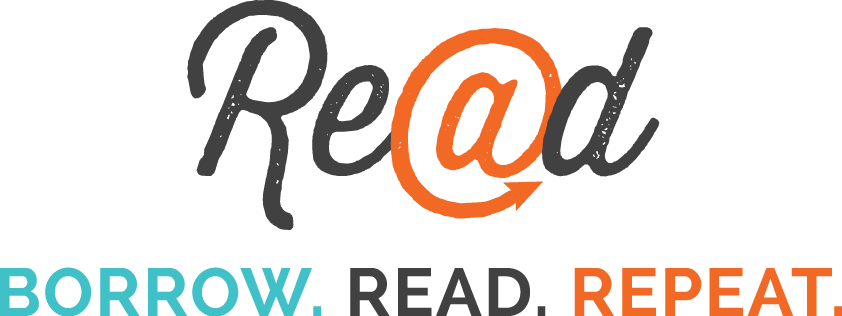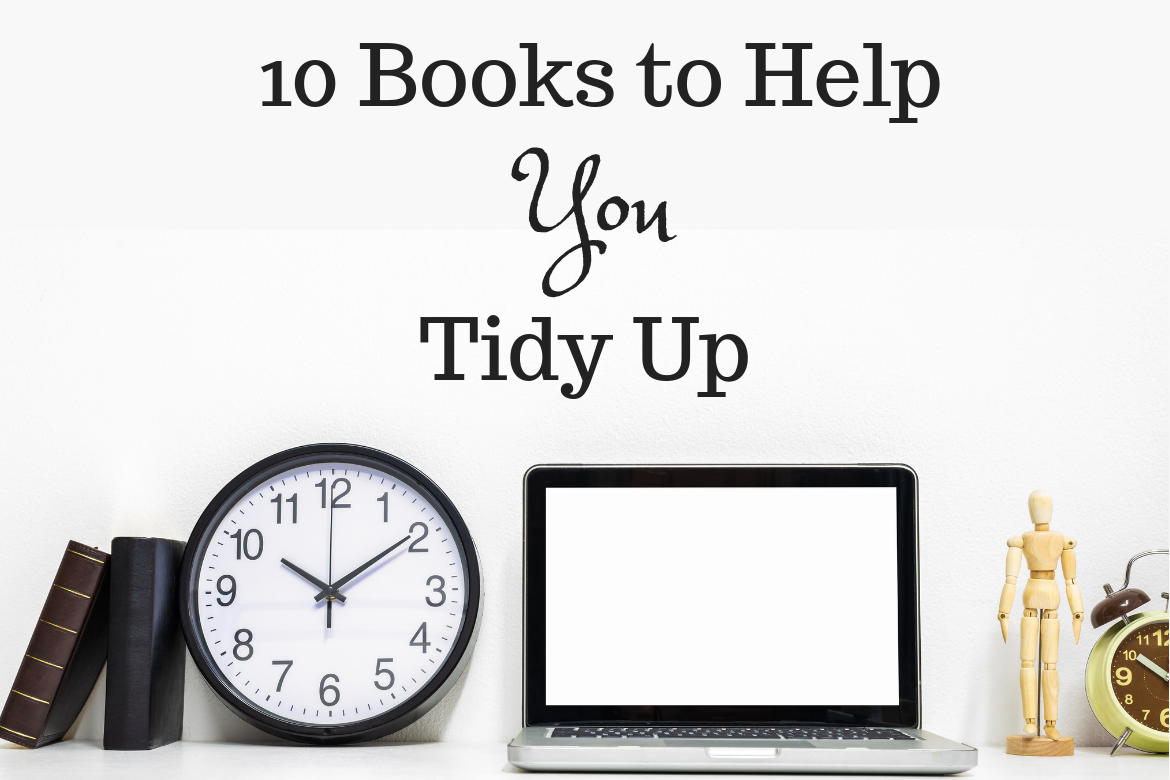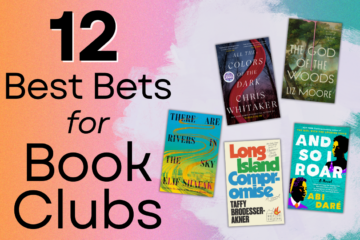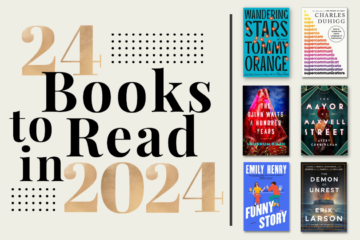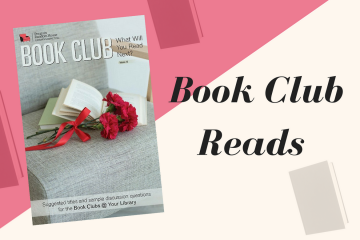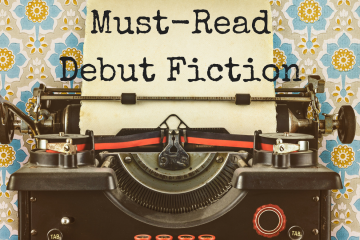With the popularity of Netflix’s new series Tidying Up with Marie Kondo, it’s apparent that people are searching for ways to simplify their lives. In addition to the book that inspired it all—The Life-Changing Magic of Tidying Up by Marie Kondo—we’ve put together a list of reads that are easy to follow and can help you tidy up . . . your physical space, your digital space, and unclutter your mind!
Click to Watch the Netflix Trailer for Tidying Up with Marie Kondo.
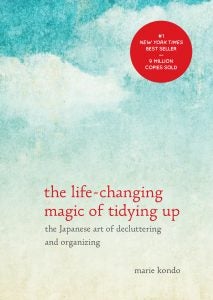
The Life-Changing Magic of Tidying Up: The Japanese Art of Decluttering and Organizing by Marie Kondo
The #1 New York Times bestselling guide to decluttering your home and the inspiration for the hit Netflix show Tidying Up with Marie Kondo.
Japanese cleaning consultant Marie Kondo takes tidying to a whole new level, promising that if you properly simplify and organize your home once, you’ll never have to do it again. Most methods advocate a room-by-room or little-by-little approach, which doom you to pick away at your piles of stuff forever. The KonMari Method, with its revolutionary category-by-category system, leads to lasting results.
With detailed guidance for determining which items in your house “spark joy” (and which don’t), this international bestseller featuring Tokyo’s newest lifestyle phenomenon will help you clear your clutter and enjoy the unique magic of a tidy home—and the calm, motivated mindset it can inspire.
Click to Read an Excerpt.
Watch Marie Kondo’s Tricks for Folding T-Shirts.
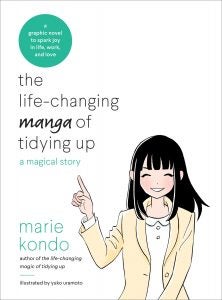
The Life-Changing Manga of Tidying Up: A Magical Story by Marie Kondo
This graphic novelization brings Kondo’s life-changing tidying method to life with the fun, quirky story of a woman who transforms her home, work, and love life using Kondo’s advice and inspiration.
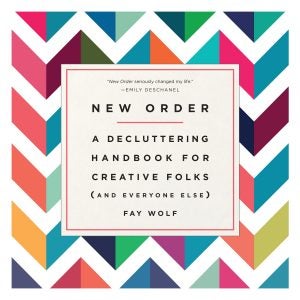
New Order: A Decluttering Handbook for Creative Folks (and Everyone Else) by Fay Wolf
For readers of The Life-Changing Magic of Tidying Up and The Power of Habit comes a revelatory, witty guide to a clearer home and a more creative mind.
Can a decluttered space fuel a creative mind? Heck yes, says organizing expert Fay Wolf, who has helped everyone from Hollywood celebrities to schoolteachers to work-from-home parents achieve a simpler, more fulfilling life. Here, Wolf outlines her basic rules for saying goodbye to the stuff crowding up your space and hello to new habits that free you up for the things you’re passionate about. And it can all be done in as little as a few minutes a day. Learn how to create productive to-do lists, curb your desire to accumulate, downsize digital clutter and social media, and more!
Wolf also shares her favorite productivity apps and resources for donating your many, many items. From the outer clutter of your home to the inner clutter of your chatty mind, this handbook will help you make room for artistic inspiration and invite you to treat yourself to less.
Click to Read an Excerpt.
Watch One Minute Tips: Sorting 101 (with Fay Wolf).
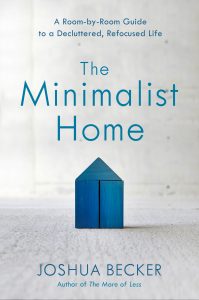
The Minimalist Home: A Room-by-Room Guide to a Decluttered, Refocused Life by Joshua Becker
A popular minimalist blogger and author of The More of Less shows you how to methodically turn your home into a place of peace, contentment, and purposeful living.
One of today’s most influential minimalist advocates takes us on a decluttering tour of our own houses and apartments, showing us how to decide what to get rid of and what to keep. He both offers practical guidelines for simplifying our lifestyle at home and addresses underlying issues that contribute to over-accumulation in the first place. The purpose is not just to create a more inviting living space. It’s also to turn our life’s HQ–our home–into a launching pad for a more fulfilling and productive life in the world.
Click to Read an Excerpt.
Watch Joshua Becker’s “How I Became a Minimalist.”
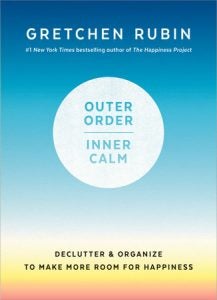
Outer Order, Inner Calm: Declutter & Organize to Make More Room for Happiness by Gretchen Rubin
With a sense of fun, and a clear idea of what’s realistic for most people, Gretchen Rubin suggests dozens of manageable steps for creating a more serene, orderly environment—one that helps us to create the lives we want.
For most of us, outer order contributes to inner calm. And for most of us, a rigid, one-size-fits-all solution doesn’t work.
The fact is, when we tailor our approach to suit our own particular challenges and habits, we’re then able to create the order that will make our lives happier, healthier, more productive, and more creative.
Gretchen Rubin has found that getting control of our stuff makes us feel more in control of our lives. By getting rid of things we don’t use, don’t need, or don’t love, we free our minds (and our shelves) for what we truly value.
Coming in March 2019!
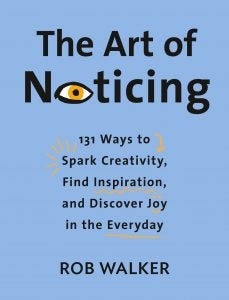
The Art of Noticing: 131 Ways to Spark Creativity, Find Inspiration, and Discover Joy in the Everyday by Rob Walker
An imaginative, thought-provoking book to awaken your senses and attune them to the things that matter in your life.
Welcome to the era of white noise. Our lives are in constant tether to phones, to email, and to social media. In this age of distraction, the ability to experience and be present is often lost: to think and to see and to listen.
Enter Rob Walker’s The Art of Noticing. This book will spark your creativity—and most importantly, help you see the world anew. Through a series of simple and playful exercises—131 of them—Walker maps ways for you to become a clearer thinker, a better listener, a more creative workplace colleague and finally, to rediscover your sense of passion and to notice what really matters to you.
Coming in May 2019!
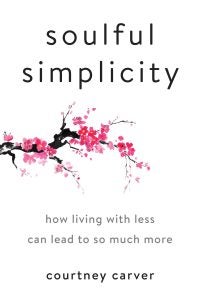
Soulful Simplicity: How Living with Less Can Lead to So Much More by Courtney Carver
Courtney Carver shows us the power of simplicity to improve our health, build more meaningful relationships, and relieve stress in our professional and personal lives.
We are often on a quest for more—we give in to pressure every day to work more, own more, and do more. For Carver, this constant striving had to come to a stop when she was diagnosed with Multiple Sclerosis (MS). Stress was like gasoline on the fire of symptoms, and it became clear that she needed to root out the physical and psychological clutter that were the source of her debt and discontent.
In this book, she shows us how to pursue practical minimalism so we can create more with less—more space, more time, and even more love. Carver invites us to look at the big picture, discover what’s most important to us, and reclaim lightness and ease by getting rid of all the excess things.
Click to Read an Excerpt.
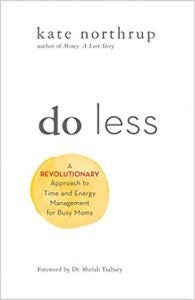
Do Less: A Revolutionary Approach to Time Management for Busy Moms by Kate Northrup
A practical and spiritual guide for working moms to learn how to have more by doing less.
This is a book for working women and mothers who are ready to release the culturally inherited belief that their worth is equal to their productivity, and instead create a personal and professional life that’s based on presence, meaning, and joy. As opposed to focusing on “fitting it all in,” time management, and leaning in, as so many books geared at ambitious women do, this book embraces the notion that through doing less women can have—and be—more.
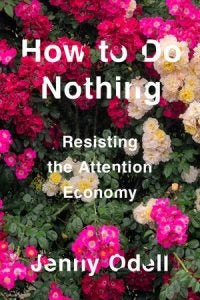
How to Do Nothing: Resisting the Attention Economy by Jenny Odell
A galvanizing critique of the forces vying for our attention—and our personal information—that redefines what we think of as productivity, reconnects us with the environment, and reveals all that we’ve been too distracted to see about ourselves and our world.
Nothing is harder to do these days than nothing. But in a world where our value is determined by our 24/7 data productivity . . . doing nothing may be our most important form of resistance.
So argues artist and critic Jenny Odell in this field guide to doing nothing (at least as capitalism defines it). Odell sees our attention as the most precious—and overdrawn—resource we have. Once we can start paying a new kind of attention, she writes, we can undertake bolder forms of political action, reimagine humankind’s role in the environment, and arrive at more meaningful understandings of happiness and progress.
Far from the simple anti-technology screed, or the back-to-nature meditation we read so often, How to Do Nothing is an action plan for thinking outside of capitalist narratives of efficiency and techno-determinism.
